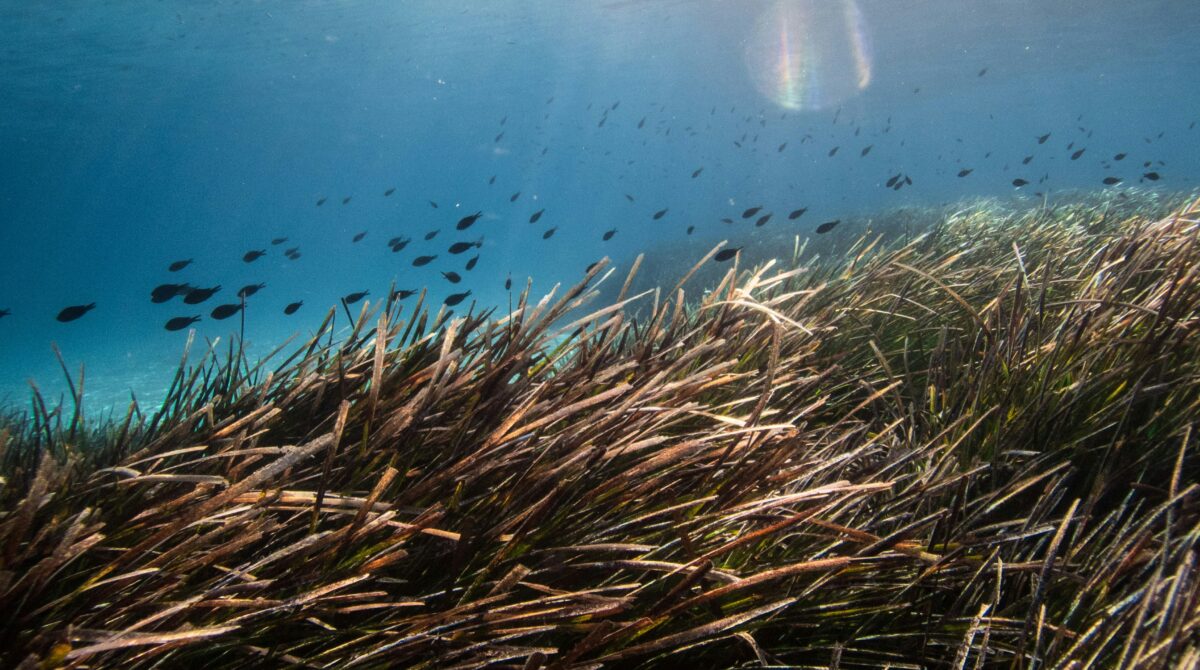How was the “3R for the Sea” project born, and what are its goals?
The project takes place in Sicily, in the Gulf of Palermo, a particularly degraded marine area, and has three main objectives: to support the re-colonization of Posidonia oceanica seagrass beds (an essential marine ecosystem plant) through a transplant initiative, to combat marine pollution by recovering abandoned tires from the seabed, and to educate high school teachers and students through awareness-raising activities. The first “R” in the project, “3R for the Sea,” stands for “Regenerate,” meaning to give new life to natural resources. This initial phase aims to preserve the coastal marine environment by restoring Posidonia oceanica meadows, which produce oxygen.
The second “R” is “Recover,” aiming to combat pollution. Large tires, abandoned illegally on the seafloor, deteriorate over time, releasing micro-particles into the environment. Some of the retrieved tires will be repurposed: after specialized treatments, they will be transformed into rubber powder granules for use in modified asphalt, flooring, sports surfaces, insulation materials, and urban furnishings.
The last “R” is “Respect.” We must protect the environment in which we live because, if it’s unhealthy, we, too, risk our well-being. Respect begins with knowledge. This third objective encompasses environmental education activities involving schools.
What do the educational activities entail?
The environmental education activities involve both teachers and students through hands-on workshops run by our staff. These take place at our recently inaugurated Environmental Education Center, Baia del Corallo, a splendid facility located in a marine protected area in the Gulf of Palermo. The workshops aim to teach students about the sea, its essential role in climate regulation, the importance of Posidonia meadows, the relationship between the sea and local traditions and knowledge, and to raise awareness about the need to protect biodiversity in all its complexity. Our lives are inextricably linked to the health of the sea and the environment.
The educational materials created provide accurate information about the importance of preserving the environment. Future generations will be tomorrow’s decision-makers, and only by bringing these lessons into schools can a cultural shift begin. Through increased awareness, we can hope to confront the challenging future humanity faces, achieving the ecological transition that the world requires. This project, supported by specialized staff and a vast network of partners, is made possible by funding from the Italian Buddhist Institute Soka Gakkai’s 8×1000 funds. We are pleased to be able to make a positive impact in this degraded area and breathe life into this Mediterranean “gem.”
Why is the sea so crucial in maintaining ecological balance?
The sea produces more than 50% of the oxygen we breathe, though this fact is not widely known. It generates oxygen through photosynthetic organisms, such as the marine plants we’re planting—Posidonia oceanica being one—that produce oxygen and absorb carbon dioxide. The ocean absorbs 24 million tons of carbon dioxide daily, helping to mitigate the effects of human emissions that drive global warming. Indeed, human activity generates over 90% of the excess heat that has accumulated on Earth in the past 50 years, primarily stored in the ocean.
The primary cause of marine pollution is plastics and microplastics—tiny fragments weathered by water—that remain on the seafloor and can endanger marine life. Microplastics have even been found in our bodies, including our blood, human placenta, and even in brain tissue. Everything is connected.
What can we do daily to foster ecological awareness in ourselves and others?
Laws are necessary to protect the marine environment: limiting overfishing, banning major events on natural sites, combating illegal fishing, and supporting the European petition to end the brutal practice of shark finning, among others. However, it’s also essential to recognize that each of us can bring about change through our actions, even if they seem small.
A simple act, like throwing a cigarette butt on the ground, may seem insignificant but has a huge impact on the environment. We can make a difference by reducing single-use plastic, using water bottles, buying bulk instead of packaged food, making sustainable choices, avoiding synthetic clothing that releases microplastics in the wash, and so forth. In this way, we not only reduce our impact but also set an example for others, including our children and those around us, creating a virtuous cycle aligned with the principles of ecological transition.
Each of us can — and must — make a difference to be part of the change.
